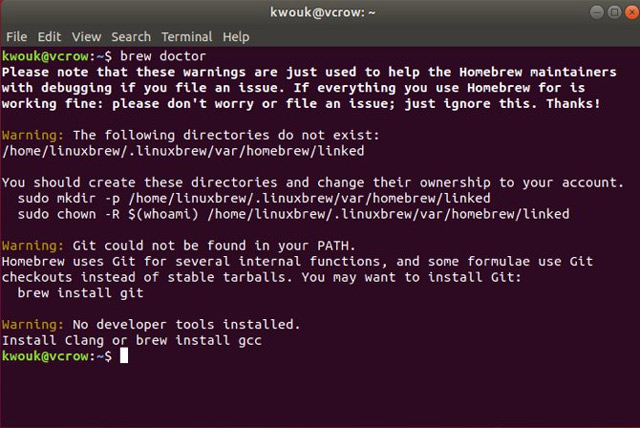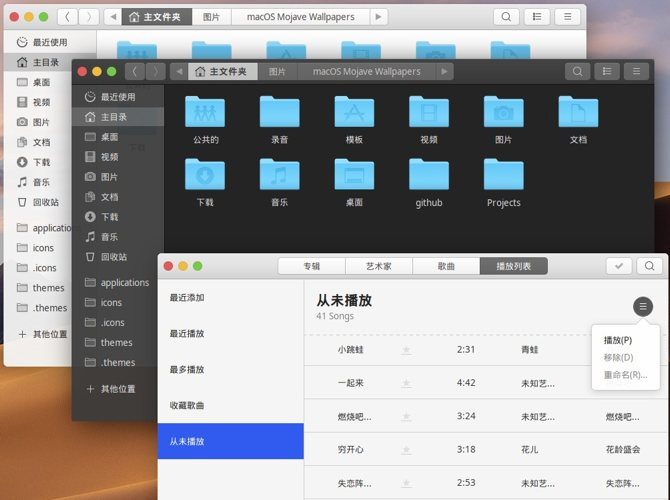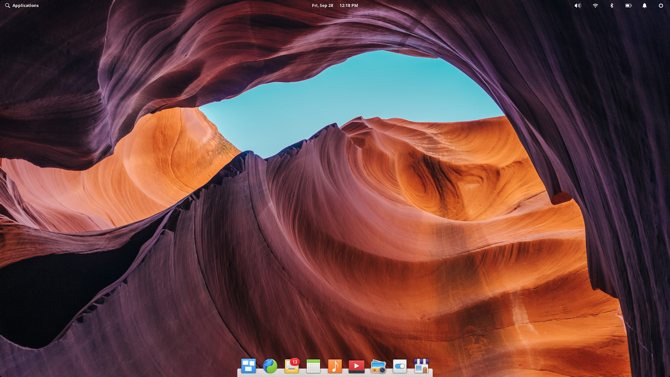Switching from Mac to Linux is easier with the following 5 tips
Any operating system has its own advantages and disadvantages, macOS is no exception. Its biggest drawback is 'exclusive' for Apple computers. If you don't like the hardware that the company offers and want to find an operating system based on Unix, Linux is the perfect alternative. To make it easier to get acquainted with Linux, see the following tips.
- 'Transform' Ubuntu Linux into Mac OS X
- How to install Kali Linux on macOS
- 5 Linux things outperform Mac OS X
1. Use Linuxbrew instead of the package manager of the distribution

Switching to Linux is much easier if you're used to using the command line. On the Mac, you must be familiar with the Homebrew package manager. Good news for you, Homebrew is also available on Linux with a different name.
In early 2019, Homebrew was updated, one of the additional features was Linux support. On Linux, this package manager is known as Linuxbrew. It works as it does on Macs and is easier to install packages using the distribution's default manager.
Homebrew also installs packages in the home directory, making it easier for new people to access and no longer worrying about installing something that could damage the system.
If you're a developer, this manager is especially handy because you can easily install different Ruby or Python language versions.
2. Install Spotlight style launcher

Mac users often launch apps from Launchpad or Spotlight. If you are familiar with Spotlight, you can still use it on Linux. Some Linux distributions have built-in Spotlight-style launchers or, if not available, you can install them.
Some launchers for Linux are relatively familiar to Mac users, in which Cerebro is the most Spotlight-like launcher. In addition to launching the application and searching for files, it also functions as a basic computer, a map and other functions from the plugin. If you are familiar with using the third-party launcher Alfred, you can consider Albert instead.
3. Desktop variables like Mac

Changing the desktop interface is easy, but it depends on the desktop environment you use. GNOME seems to be the most popular, it has a theme similar to macOS Mojave. If you like the old macOS version, you can try the Aqua-inspired theme. Other desktops like Xfce have macOS-like dock and use GTK theme.
4. Install macOS style dock

A characteristic characteristic of using macOS is the dock. As mentioned above Xfce has a dock-style panel. If you use Gnome, you can use the extension called Dash to Dock to turn the dask into a dock. In addition, you can install the dock with custom options like Plank.
5. Use the distribution with the same features as Mac

The tips above help make the Linux distribution a bit more Mac-like, but you can immediately choose a distribution with similar features. Ubuntu is probably the most popular Linux distribution, but Fedora is the perfect choice for Mac users. It uses the GNOME 3 desktop, unlike completely, but there are some Mac similarities like dock, launcher, and desktop. If you want a desktop like Mac, you can try Elementary OS. It focuses on simplicity but appeals to Mac users.
You should read it
- 10 things to keep in mind when switching to Linux mobile operating system
- How to use Zsync to transfer a file part in Linux
- 14 interesting Linux commands in Terminal
- Compare the most popular Linux distributions today
- 7 best Linux distributions based on Red Hat
- Convert data, applications from Windows to Linux in minutes
- 5 ways to make Linux desktops look great
- Basic Linux commands everyone needs to know
May be interested
- Disable Fast User Switching on Windows 7, 8 and 10
 fast user switching allows users to log in to the computer when another user is still logged in. can say this feature is quite useful for users. but what also has two sides, besides the positive side, also has drawbacks. suppose if another user is logged in and you cannot start or shut down the computer, the risk of losing opened data or files is very high.
fast user switching allows users to log in to the computer when another user is still logged in. can say this feature is quite useful for users. but what also has two sides, besides the positive side, also has drawbacks. suppose if another user is logged in and you cannot start or shut down the computer, the risk of losing opened data or files is very high. - 3 Linux mobile operating systems you can install today
 are you tired of using android? do not want to become part of the proprietary technology ecosystem? security and privacy are becoming increasingly important for smartphone users, but what are the answers to these problems? for some people, dropping android and switching to a phone that can run a linux mobile operating system is the answer.
are you tired of using android? do not want to become part of the proprietary technology ecosystem? security and privacy are becoming increasingly important for smartphone users, but what are the answers to these problems? for some people, dropping android and switching to a phone that can run a linux mobile operating system is the answer. - Should I install Arch Linux?
 arch linux is one of the most popular linux operating systems. arch linux is even easier to install than arch-based distributions like manjaro and antergos.
arch linux is one of the most popular linux operating systems. arch linux is even easier to install than arch-based distributions like manjaro and antergos. - How to install Linux apps on Chromebooks
 with linux now supported on chromebooks, the play store is no longer the only place where you can download apps. many chrome os devices can run linux applications, making it easier than ever.
with linux now supported on chromebooks, the play store is no longer the only place where you can download apps. many chrome os devices can run linux applications, making it easier than ever. - 10 most useful Linux commands
 for those who are new to linux, administration will face many difficulties. here are the 10 most useful linux commands that make your administration a lot easier.
for those who are new to linux, administration will face many difficulties. here are the 10 most useful linux commands that make your administration a lot easier. - 5 reasons to use Linux desktop instead of WSL
 while wsl has made it easier for people who need to use both windows and linux on the same machine, there may still be reasons to use a real linux desktop on your computer.
while wsl has made it easier for people who need to use both windows and linux on the same machine, there may still be reasons to use a real linux desktop on your computer. - Local area network - LAN: Introduce WAN network - Part V
 in this article we will introduce different protocols and technologies used in wide area networks - wan. topics include point-to-point connection, switching - circuit switching, packet switching - packet switching, circuit o, and devices used in wan
in this article we will introduce different protocols and technologies used in wide area networks - wan. topics include point-to-point connection, switching - circuit switching, packet switching - packet switching, circuit o, and devices used in wan - 10 ways to make using apt-get easier
 the apt-get software management system allows the admin to keep the system up to date with the best and latest software (or previously uninstalled software) using the command line input simple, but not everyone sees it.
the apt-get software management system allows the admin to keep the system up to date with the best and latest software (or previously uninstalled software) using the command line input simple, but not everyone sees it. - The Korean government is going to use the Linux operating system instead of Windows because of the expensive cost
 according to the korea herald, the korean ministry of home affairs and security will pilot the transition from windows operating system to linux first. if no serious security or compatibility issues are found, the linux operating system will be applied at other korean government agencies.
according to the korea herald, the korean ministry of home affairs and security will pilot the transition from windows operating system to linux first. if no serious security or compatibility issues are found, the linux operating system will be applied at other korean government agencies. - 8 things to know before switching from Windows to Ubuntu
 preparing for the transition is easy, and just knowing a few things may work a little differently on a new platform. here are 8 things you need to keep in mind before switching from windows to ubuntu.
preparing for the transition is easy, and just knowing a few things may work a little differently on a new platform. here are 8 things you need to keep in mind before switching from windows to ubuntu.










 How to list all applications on Mac
How to list all applications on Mac How to close the Terminal automatically on macOS
How to close the Terminal automatically on macOS Clean up Mac screens with Stacks feature
Clean up Mac screens with Stacks feature How to use 'Hey Siri' on an old Mac
How to use 'Hey Siri' on an old Mac How to right click on Mac
How to right click on Mac How to turn Caps Lock keys into modifier keys on Mac
How to turn Caps Lock keys into modifier keys on Mac